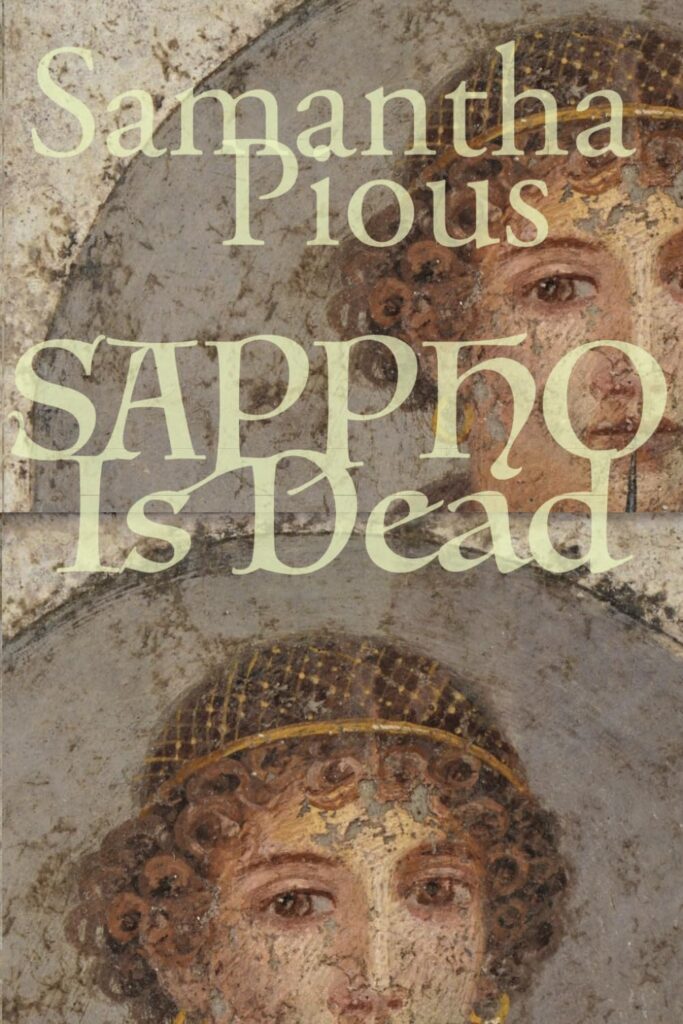
Kidder Smith, Abruptly Dogen, Punctum Books 2024.
Zen books can be quite annoying. They usually purvey spiritual non sequiturs with a sanctimonious undertone of “if you were as enlightened as me, you would find this quite illuminating”. In America, this is worsened by our nation’s instinctive anti-intellectualism. America’s Puritan founders meant their commonwealth to be a new Eden of intuitive virtue, free from the mischievous sophistication of Europe. Thus, we are apt to mistake the seeming simplicity of Zen for an exotic iteration of our own unletteredness.
My characteristic experience in Zen circles is being told I have a “monkey mind” by people with scanty educations, as though there were a secret back door to wisdom that was off limits to anyone who’d ever learned anything.
Zen really shouldn’t seem so cryptic. It isn’t so in East Asia, where its Buddhist presuppositions are generally understood. The difficulty in translating Zen texts is to convey the really profound philosophy underlying them without turning a short poem into a long essay.
Kidder Smith’s Abruptly Dogen is the only really successful translation of a Zen text I have seen. The very title, concise and striking, gives us a foretaste of the sudden enlightenments to be found in its pages.
Dogen was the 13th century Japanese monk who founded the Soto school of Zen. This book is a sampling from his voluminous writings, much of which were intended for Buddhist monks. Smith has made a judicious selection of the most appealing and accessible texts. To describe his method and style, I cannot improve upon his own careful formulation in the introduction,
I seek to afford an intimacy, to give his ecstatic roaming more room to set us wondering. . . His language is a unique grapholect, jumpy and precise.
(I didn’t know what a grapholect was either. The word was coined in the sixties, and means a kind of standardized written speech; it was synthesized out of “graph”and “dialect.”)
As shown by Oh Gee, the text given in full in this issue, Smith brings poetic power to the translation. He has not unpacked the underlying philosophy, but he has made the text beautiful and intriguing, and by the medium of aesthetic pleasure he succeeds in conveying the flavor of Zen.
In deference to those endowed with “monkey mind,” a simian inheritance which I believe to be quite as valuable as our primate opposable thumbs, I will offer a few of my own observations on Zen. I myself believe that the attempt to express the supposedly inexpressible is one worth making, even if it does no more than make clear the limits of our knowledge.
The only really helpful book I found on Zen was Suzuki’s Essays in Zen Buddhism, but even this put a lot of emphasis its ineffable nature
As far as I can figure out, the cryptic nature of Zen teaching is meant to do justice, first, to the real/unreal nature of reality. In Buddhist ontology, all that is arises in dependence on something else, so there’s nothing ultimately holding reality up, even though it is still “up.” All that is, is paradoxical, so our description of it must also be paradoxical.
Too, Buddhism places a high value on non-attachment, and it applies this attitude to conceptions as well as to possessions and sensations. Thus, for a thorough-going Buddhist, conceptions have to be smashed as soon as they fully arise, lest they become blinders.
Zen adds something further to these Buddhist views: a belief in the underlying harmony of existence, the idea that there is an intuitive “way,” a melody, as it were, to being, which an enlightened sage can move with. This last notion is, I believe, at the root of the Zen aesthetic, and suggests how the reality/unreality and conception/non-attachment to conception, problems can be resolved: through beauty. And it is through beauty that Kidder Smith has managed the “impossible” task of translation.
It appears to me that factors I have listed above, the dubious reality of reality, not attachment, and the belief that there’s a wordless and musical path through it all, lead to the seemingly Dada one-upmanship of Zen dialogues, every thesis being promptly superseded by its antithesis, which then undergoes the same fate. This only ends when we get to a synthesis that “wins” because of its beauty or humor—which takes the whole discussion out of theory to the higher level of immediate intuition.
I asked Meryl Gross, our Art Director here at 96th of October, about Zen, since she is something of a sybil when it comes to existential and aesthetic problems. She said, “The Japanese don’t know what they mean by Zen—because it doesn’t mean anything. Japanese Zen is elaborately gift-wrapped nothingness and nihilism.”
The charge of nihilism has been leveled at the Mahayana in general for more than a thousand years, so her assertion has the weight of history—though this isn’t always enough to tip the scales. And Meryl’s droll allusion to the Japanese genius for wrapping and presentation is as percipient as Ruskin and as witty as Wilde.
Since the author, like the counsel for the defense, should always be allowed the last word, I asked Kidder Smith what he thought of our ponderings. He wrote back,
“I like so much what you say about (un)reality. I think anything can be clearly expressed, but maybe not in words, though. My chief remark would be on the dual nature of all knowledge: there’s a knowing subject and known object. So what we see/understand/know is dependent on the subject—the questions she asks, for example. Here you are doing a grand philosophical knowing. That works well. Up to a point. But isn’t the point of Zen our liberation? What do you think?”
Thus Smith gives us, in his email as in his translation, a large-hearted, genteel and pleasant example of Zen in action.

Samantha Pious, Sappho is Dead, Headmistress Press 2024.
There is not a great deal to say about this book because there is not a great deal of book there. At fifty-five pages, nicely laid out with never two poems to a page, this is a perfect-bound chapbook.
What one can say about it is without qualification positive. It is a volume of light verse, taking as its topics cats, literature, the art of poetry, science fiction apocalypses, and mild dissatisfaction with one’s body. The poems are witty and polished productions. They remind us somewhat of Carolyn Kizer—who is certainly worth being reminded of. We reproduce in this issue our three favorites from the volume, which thus will speak for itself.

Lisa Lampert-Weissig, Instrument of Memory, Encounters with the Wandering Jew. University of Michigan Press 2024. (This book is, admirably, available for reading online as well as for hard-copy purchase.)
Instrument of Memory is one of the fascinating books, like Mario Praz’ Romantic Agony or Philippe Jullian’s Dreamers of Decadence, which offers a convenient and thoughtful off-road tour of one of literature’s lost and ruined cities.
Beginning with first influential appearances of the Wandering Jew—in Matthew Paris’s thirteenth century Chronica majora and the anonymous 1602 German pamphlet “A Brief Description and Narration Regarding a Jew Named Ahasuerus,”Lampert-Weissig follows his career in literature and art into the twentieth century. Initially a personification of the Jewish people’s unhappy persistence in a Christian world, he becomes by the nineteenth century a complicated anti-Semitic trope, as in Eugene Sue’s blockbuster novel, The Wandering Jew which, in a lurid aside, blames the Jews for every pandemic in European history. At the same time, the Wanderer is being recuperated by Heinrich Heine, Sue’s neighbor in Paris, as an image of defiant Jewish identity in the Jehuda ben Halevy poem in his 1851 collection Romanzero. Lampert-Weissig’s account takes us into the twentieth century with Chagall’s use of the Wanderer’s image, and its appropriation in the ferocious poetry of Uri Zvi Greenberg.
The study becomes detailed and interesting as the texts do; the author’s treatments of Chagall and Greenberg are nuanced and profound. I mention this because the summaries of the shallow early accounts, which offer far less to the analyst, and in which date and source and influence are dominant concerns, give a very imperfect impression of Lampert-Weissig’s powers as a critic.
The focus of the book is a combination of sociology and psychology: how this legend was used by communities, Christian and then Jewish, at bind themselves together by reliving their past. For the Christian, the Wanderer was a living relic. For the Jew, his wanderings were their living reality.
This is an important contribution to the history of literature, and an enlightening tour of a fascinating occult theme, written with a sensitive appreciation of Jewish sensibilities.
I became acquainted with Lampert-Weissig’s work when she submitted her story Albatros, which appears in this issue. Any post-apocalyptic tale with a strong female lead teamed up with the ghost of a radical Zionist Yiddish poet certainly gets my vote!
This is not the only time the spectres of Yiddish poets have appeared in these pages. Jacob Rabinowitz’ story A Late Love features the ghosts of Anna Margolin and Morris Rosenfeld. And anthology of such writing would prove interesting.

Th. Metzger, Strong Songs of the Dead, Underworld Amusements, 2024.
This is one of those wonderful ethnographic studies which is at the same time a work of literature; it calls to mind those by Franz Boas’ protegées, Maya Deren (Divine Horsemen), Zora Neale Hurston (Mules and Men) and Elizabeth Reynard (The Narrow Land). Metzger offers a compelling account of his own decades-long involvement with Sacred Harp singing. This is traditional, a capella American Christian religious music, which took form in the early nineteenth century, persists to the present day, and is presently undergoing a mild revival.
Metzger considers the music and its sociology from a number of less-expected points of view. Firstly, as an intoxication. Sacred Harp sings are a loud orgy of rough-edged euphony that goes on for five hours at a stretch. Only the vaguest notion of the sound may be gained by listening to recordings. As with African drumming, the sound is complex, encompassing, and beyond the power of a microphone to pick up. Metzger is at some pains to view this as pagan, even Dionysian—with some borrowing from Nietzsche’s “Birth of Tragedy.”
Metzger searched out the most authentic living instances of the original Sacred Harp sound. Though it originated in New England, it has best kept its primordial form in the south, among persons whose Christianity tends towards the fundamentalist and charismatic. Metzger’s account of his deep south pilgrimages are the most fascinating part of the book; he has the knack of respectfully and sympathetically describing persons for whose larger views he can have little respect or sympathy. His encounters with these persons are rich in humor, and untainted by irony. Metzger has recently written a number of autobiographical books, Big Noise on the Astral Plane, Hakim Bey Real and Unreal, and Undercover Mormon, in which the fun comes from his not dissimilar encounters with eccentric and sometimes self-destructive seekers.
Metzger searched for ecstasy and authenticity as far as Sand Mountain, Alabama, a conservative Baptist bastion where snake handling is not unknown, and where the tradition of Sacred Harp singing is at its oldest and most unbroken. This journey was determined in part by Metzger’s own somewhat luddite distaste for modern industrial culture, and bolstered by his passion for the country-bluegrass-gospel music exemplified by the Louvin brothers.
Metzger also struggles one of the great conundrums of modern times. How can one feel the power of authentic spirituality without first giving credence to impossible fables, or ingesting unwholesome medicaments? Metzger’s solution is to walk beside those who follow such meandering paths, and see through their eyes. We are privileged to accompany, at a prudent remove, his obsessive, long-term flirtation with spiritual outsiderism.